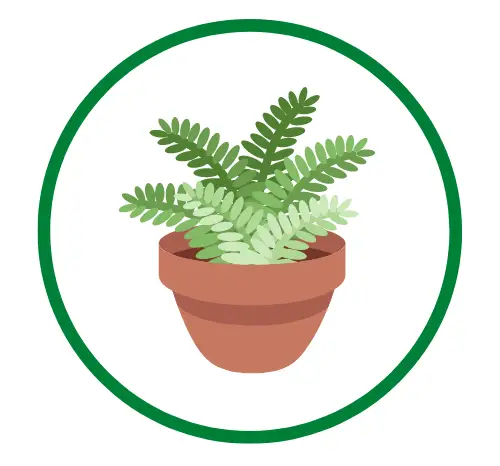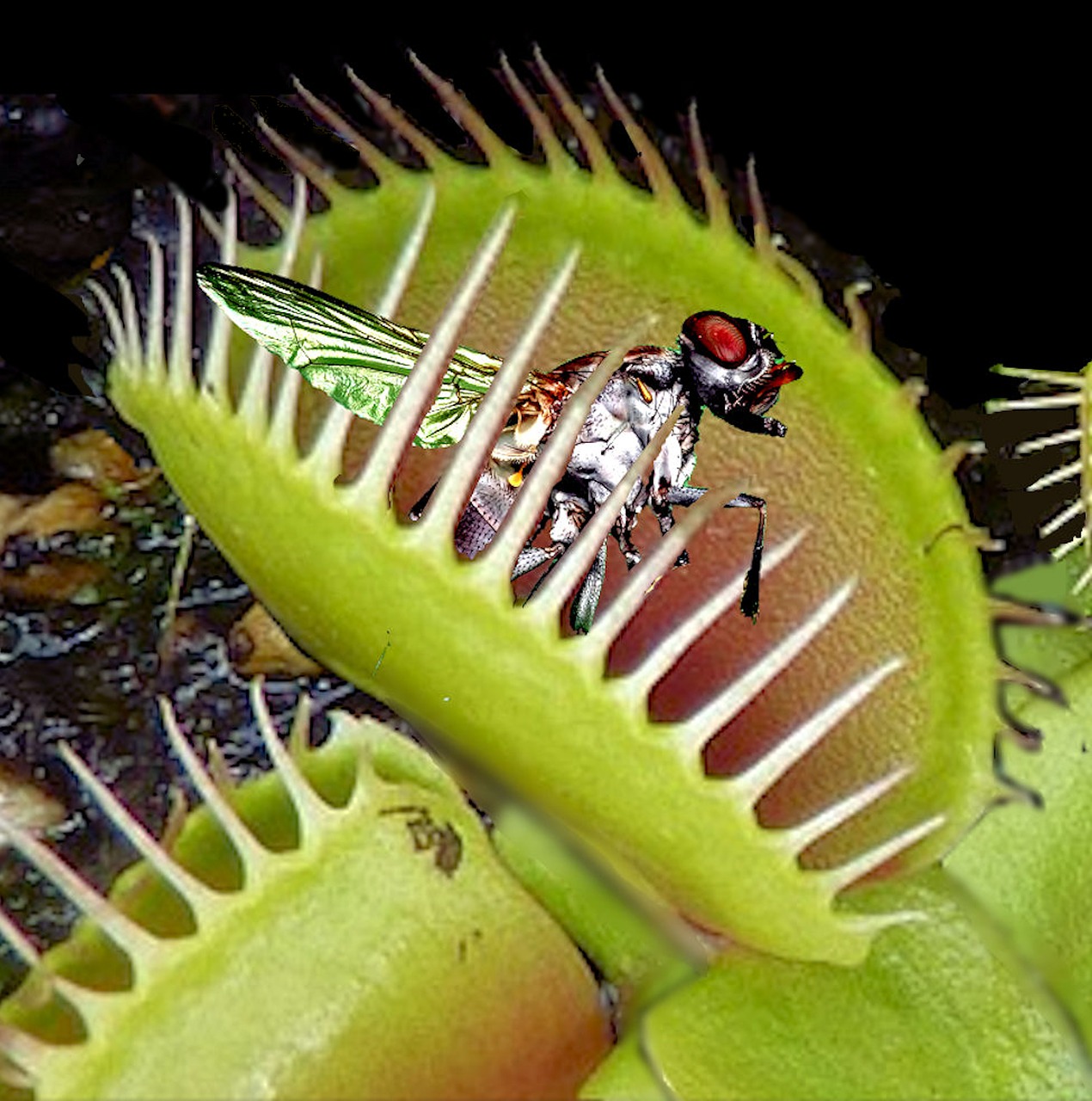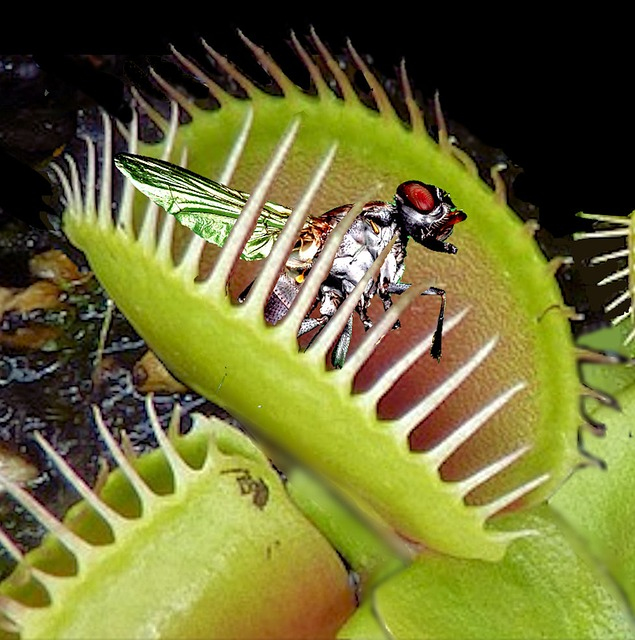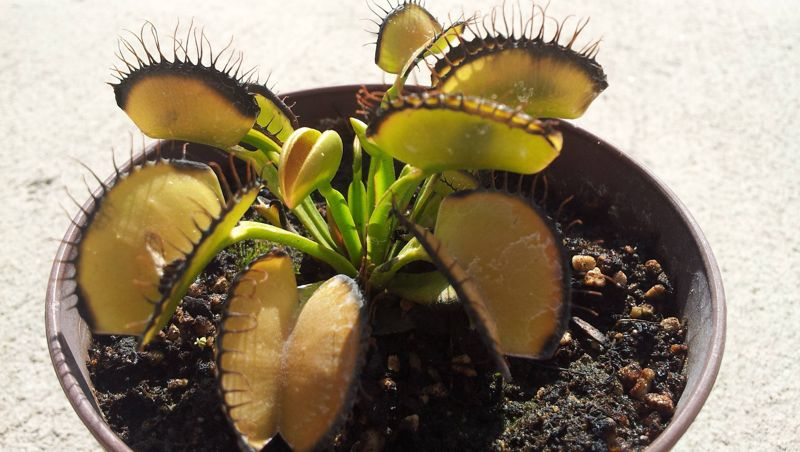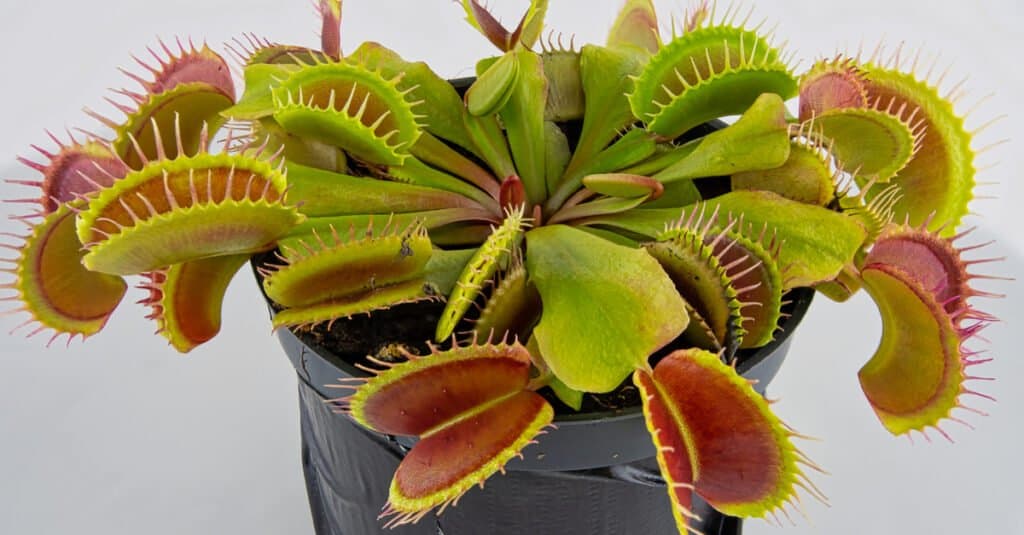Venus flytraps are well renowned for their fascinating, occasionally horrific, feeding strategy. This plant has modified leaves with bright light where insect land in the hope of eating sweet nectar. Have a flies issue? Purchase a single trap! But do Venus flytraps live up to their reputation? What exactly and how do Venus flytraps eat?
Here, we’ll discover more about the characteristics of Venus flytraps, beginning with a list of some of their favorite foods. We’ll look at the food that natural Venus flytraps consume, as well as that of their carnivorous relatives, and how they consume it. Then, we’ll discuss feeding and caring for Venus flytraps as pets. We’ll finish by addressing the age-old query, “Do Venus flytraps work at home?”
What Consume Venus Flytraps?
Carnivorous Venus flytraps consume live insects that crawl on the ground.
Venus flytraps primarily consume crawling insects like beetles, ants, spiders, human food, and fish food. They eat animal flesh.
The native habitat of Venus flytraps in the United States is along the east coast, specifically in the marshy coastal regions of North and South Carolina. Due to their mollusk-like appearance and tendency to live on the ground, they are also known locally as “meadow clams.”
Venus flytraps must obtain nutrients like salt, phosphorus, and nitrogen from other sources, especially insects, due to the poor soil in which they are able to grow.
Any insect that gets stuck in the Venus flytrap’s “mouth” will be eaten as long as it is the correct size and is struggling enough to trigger feeding.
The wild Venus flytrap consumes the following foods (all the food is live bug or dead bug):
- Spiders
- Ants
- Beetles
- Grasshoppers
- Flies
- Blood worms
- Dried crickets
- Dried worms
Size is the main consideration when the Venus flytrap chooses its prey. Because it takes more energy to digest tiny little insects than they are worth, they frequently let them go. Venus flytraps accomplish this by first only partially closing their “mouth,” giving the tiny insects an opportunity to flee.
Because they are too large and unlikely to fit within the plant’s “mouth,” earthworms are not typically eaten by venus flytraps. They favor crawling insects because they are simpler to catch, but if given the chance, they will also consume flies and other flying insects.
How often do Venus flytraps eat?
The trap on your plant are modified leaves and should be fed regularly (about once a week to two weeks). Don’t overfeed the plant. Two insects or small slugs a month during the growing season is sufficient. The plant doesn’t need food during its dormant season. Plants can survive for extended periods without being fed but they will grow more slowly. If your plant is being kept outdoors in the summer, it should be fine catching prey on its own. References Floridata: Dionaea Muscipula International Carnivorous Plant Society: Growing Dionaea Muscipula The Venus Flytrap’s Lethal Allure Writer Bio Cathryn Chaney has worked as a gardening writer since 2002.
Can Venus flytraps live without eating flies?
The bugs will eventually be drawn to the trap and sucked into them. Although carnivorous, flytraps can go for extended periods of time (a month or more) without eating insects in their natural habitat. They will have enough to eat naturally if you raise them outside. You’ll need to give Venus flytraps bug food on a regular basis if you’re growing them indoors.
Why is my Venus flytrap turning black?
Like many other temperate plants, venus flytraps need a long period of cold winter dormancy period to survive. As your plant enters its winter resting phase, it’s normal for some trap to turn black and die as the days grow shorter and the temperature drops.
How many bugs does a one trap need?
A venus flytrap should be fed four times a year with the plant being fed three bugs per feeding.
How often should I water my Venus flytrap?
Most fly trap will only need to be watered every 10 to 14 days. The soil should become much drier (though never fully dry). The peat moss directly around the base and roots should be slightly damp, while the rest of the soil is dry, to avoid root rot. Water the plant like you would any other time, making sure to water thoroughly. They require distilled water or reverse osmosis or rainwater. These types of water have little to no dissolved salts and minerals which, when built up in the soil, will kill a carnivorous plant.
How Do Venus Flytraps Eat Bugs?
Venus flytraps catch their prey by using swift plant movement.
One of the most intriguing feeding strategies in the animal (and plant) kingdom is found in venus flytraps. They have both flowers and leaves, like the majority of perennial flowers. The Venus flytrap is special because its leaves split at the ends to form two lobes resembling open, vivid pink lips. Each lobe’s border is covered in stiff cilia that resemble sharp teeth and lock together when the mouth shuts.
The Venus flytrap possesses six “trigger hairs” inside its lobes, three on each lobe. The “mouth” closes, trapping the prey when an insect makes the mistake of walking through these hairs.
The Venus flytrap has developed ways to distinguish between things that are edible, like bugs, and things that are not, like leaves and rainfall. If two or more trigger hairs are activated, it will only abruptly close (which takes about a second).
The prey is in fact stuck once the mouth closes. The two lobes combine to form a “stomach” when they seal. Then, over the course of 4–10 days, the Venus flytrap larger insects and assimilates its nutrition after releasing digestive enzymes. The remaining hard exoskeleton of the insect blows away at the conclusion as the lobes of the Venus flytrap reopen.
The Diets of Other Carnivorous Plants on nutrient poor soil
Although Venus flytraps are the most well-known carnivorous plants, other plants also devour insects.
The sundew family (Droseraceae), which has 152 species of carnivorous plants, includes venus flytraps among its members. All around the world, notably in Australia’s bog regions, nutrient-poor soil supports the growth of carnivorous plants.
Other members of the sundew family use sticky pads to capture their prey rather than “rapid plant motion” like the Venus flytrap. Venus flytraps and sundew plants both devour insects as part of their diet. Insects get caught when they land or crawl over the sticky pads. After slowly digesting the bug, the sundew plant uncurls itself over it.
The pitcher plant, which got its name because some of its varieties resemble drinking pitchers, is another type of carnivorous plant. Although they are carnivorous and even consume small rodents, salamanders, and newts, these plants are not members of the sundew family.
They work by luring animals into their bell-shaped or tube-shaped leaves. The interior walls are extremely smooth, making it difficult for the prey to flee. In a pool of digestive fluid at the base of the concave leaf, the unfortunate prey is first drowned and then digested.
What to Feed a Venus Flytrap as a Pet?
Venus flytraps actually aren’t great at catching flies or you may buy bugs in the pet store.
The Venus flytrap is a common houseplant. What exactly should you feed a Venus flytrap, though?
The solution, however, might surprise you. Actually, how you care for your Venus flytrap has a much greater impact on its health. Venus flytraps require warm, humid environments, and frequently flourish in terrariums with high humidity levels.
Although they cannot endure below-freezing temperatures, they can tolerate standing water very well. After providing a nice home for your Venus flytrap, you should feed it. During the winter, venus flytraps only require feeding about twice a month.
The best options are dried or frozen mealworms, blood worms, or crickets. Although blood worms are typically fed to fish, your Venus flytrap can digest bugs as well with a little rehydration.
Can you feed Venus fly traps fish flakes or live food?
- Quick reminder: Don’t overfeed. Only feed 2 traps per plant once a week at the most!
- Quick tips: I recommend using a toothpick or a pair of tweezers to feed your plants. Flytraps in particular need to feel live prey struggling after the trap snaps shut. This will further stimulate the trigger hairs and signal the trap to create a seal. Once the seal is made, the plant releases digestive juices and takes nourishment from the food. You can simulate the struggle of live prey by gently (GENTLY!) gently touch against the two sides of the trap with your toothpicks or tweezers.
- Make sure your plant food is no bigger than 1/3 of the trap you’re feeding. Food that is too big will not create a proper seal and the trap may die or re-open without digesting its meal. Sometimes its a few drops
- Do not feed your Venus flytraps during dormancy. During this time, the plant is resting and saving all of its energy for the next growing season. The trap will close very slowly, or may not close at all. Save the feeding for the growing season!
Are Venus Flytraps Effective at Home?
Venus flytraps grown indoors are a popular home insect control product. However, Venus flytraps struggle to capture flying insects like flies and prefer to feed on crawling insects like ants and spiders. So, if you’re thinking of buying in pet shops new traps to catch the flies in your house, you may want to look for alternatives.
Venus flytraps may not be the ideal flycatchers, but they might be the right plant for you if you like the distinctive toothed lobes, bright pink mouth, and snap-shut motion of a carnivorous plant on the prowl.
Is it good to have a Venus flytrap at home?
Suitable insects you might find outside include small ants or baby grasshoppers, another insect. Arthropods other than insects, such as little sowbugs, also called pillbugs or roly-polies, or small spiders will also work. Pet stores often sell live crickets as food for pet reptiles and amphibians. Although adult crickets are too large for small Venus flytrap leaves, baby crickets are suitable.
International Carnivorous Plant Society suggests trying rehydrated blood worms, which is fish food you can buy in pet stores. Even in a regular home, they can capture insects without a problem—these often consist of flies and spiders. If you do feed them, just be sure to only feed insects and make sure the entire insect can fit into the trap when open mouth.
